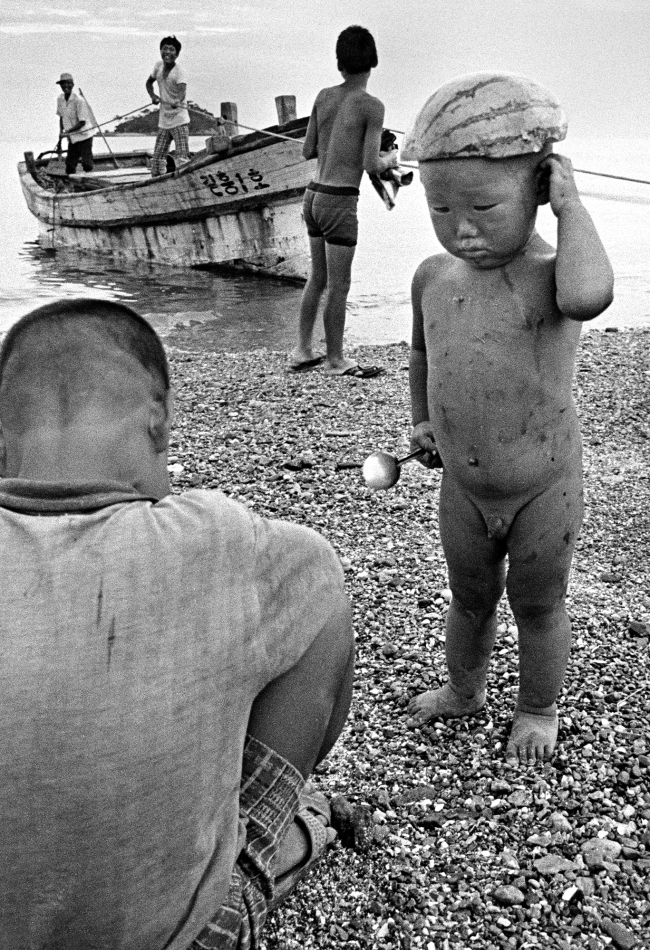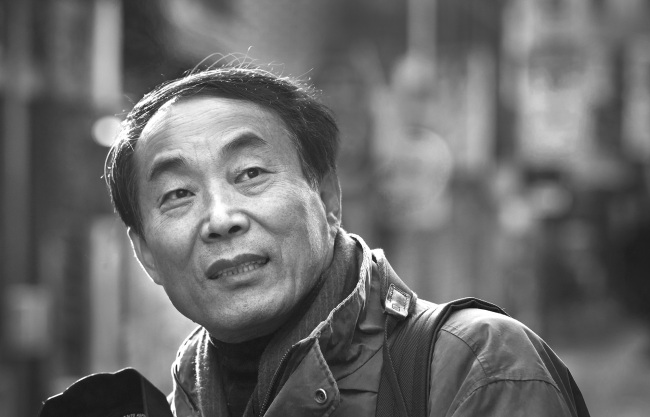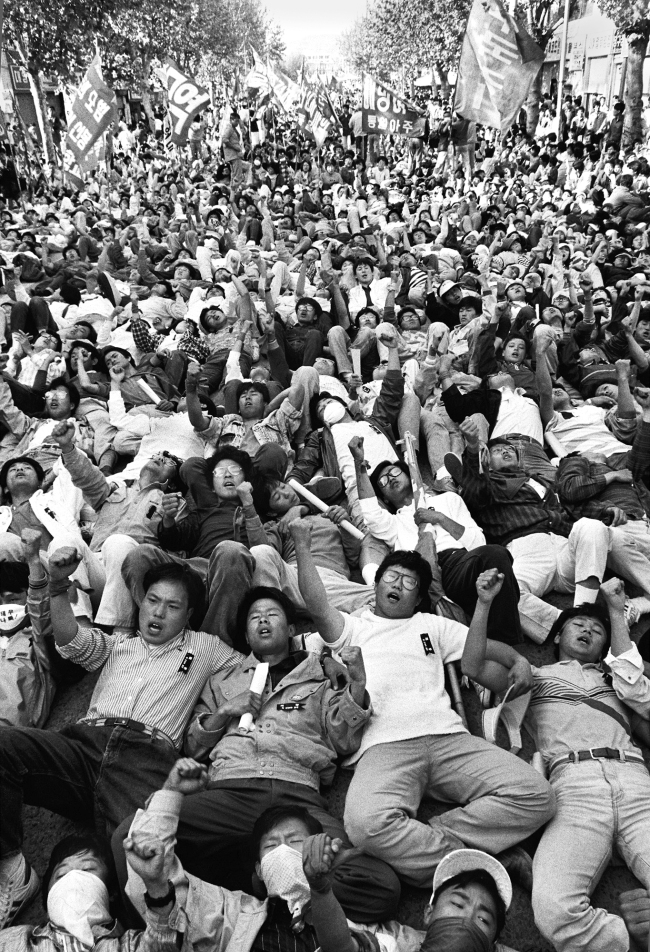Witnessing modern Korea through a lens
Photographer Kim Nyung-man captures major events in book ‘Portrait of Times’
By Lee Woo-youngPublished : Feb. 23, 2014 - 19:30

When photographer Kim Nyung-man was standing in the photo line, watching President Bill Clinton greeting media artist Nam June Paik, he sensed something was going to happen and pressed the shutter-release button instinctively.
Paik’s pants fell down, and the people around him failed to notice for a brief second. What Kim captured shows former President Clinton maintaining a smile at Paik, whose pants are down around his ankles, while two guards in the background look unmoved by what has just happened.
“There was a man next to Paik who pulled his pants up again, but I was able to take it before he pulled them up. It was so unexpected,” said Kim in a phone interview with The Korea Herald last week.
Paik’s pants fell down, and the people around him failed to notice for a brief second. What Kim captured shows former President Clinton maintaining a smile at Paik, whose pants are down around his ankles, while two guards in the background look unmoved by what has just happened.
“There was a man next to Paik who pulled his pants up again, but I was able to take it before he pulled them up. It was so unexpected,” said Kim in a phone interview with The Korea Herald last week.

The 1998 photo was among hundreds that Kim selected for his photography book “Portrait of Times,” a compilation of photos taken during his 40-year career as a photographer and photojournalist.
Kim Nyung-man was there for many decisive moments that shaped the turbulent modern history of Korea as a photojournalist at Donga Ilbo newspaper for 20 years. His pictures captured the beginning of modernization in the 1970s, drastic changes in the rural and city landscape that followed, violent protests for democracy in the 1980s, and inside views of the presidential residence Cheong Wa Dae.

Of many important events, Kim said he was lucky to observe the 1980 civil uprising for democratization in Gwangju. But most of his pictures depicting students protesting and soldiers threatening them were not allowed to be published due to censorship by the authoritarian government.
“Photos that were in the newspaper were of veteran soldiers cleaning up the streets after violent protests,” Kim recalled. Only in 1993 was he finally able to publish the photos in a photography book. “I paid the debt in my mind to the people of Gwangju.”
Kim said he always carried two cameras: one for his work and one for taking photos embedded with his emotions and thoughts.
“If you step back from the scene, you can see many things,” Kim said. “I was planning to publish my own photography book one day. So I took both objective and subjective photos of major sociohistorical events.”
His photos of rural scenes during the economic development in the 1970s were noted for their honest portrayal of Korea. His photos of rural scenes are now included in the collections of the National Museum of Modern and Contemporary Art, Korea, and the Seoul Museum of Art.
One of the photos in the MMCA collection shows a naked child of 3 or 4 years old being scolded by his father. The viewer may break into laughter after spotting a spoon in the boy’s right hand and a “watermelon hat” on his head, hinting at the reason why the boy is being reprimanded.
The book features chapters that reassemble the process of Korea’s modernization, but ends with heartwarming photos of North and South Korean soldiers holding hands on a slippery hill, sad faces of separated families and the joy of a family reunion.
“It felt like I had to keep records of important events in modern Korean history. I feel deeply grateful for being there at each important stage,” he said.
By Lee Woo-young (wylee@heraldcorp.com)


![[Herald Interview] 'Amid aging population, Korea to invite more young professionals from overseas'](http://res.heraldm.com/phpwas/restmb_idxmake.php?idx=644&simg=/content/image/2024/04/24/20240424050844_0.jpg&u=20240424200058)













![[KH Explains] Korean shipbuilding stocks rally: Real growth or bubble?](http://res.heraldm.com/phpwas/restmb_idxmake.php?idx=652&simg=/content/image/2024/04/25/20240425050656_0.jpg&u=)

